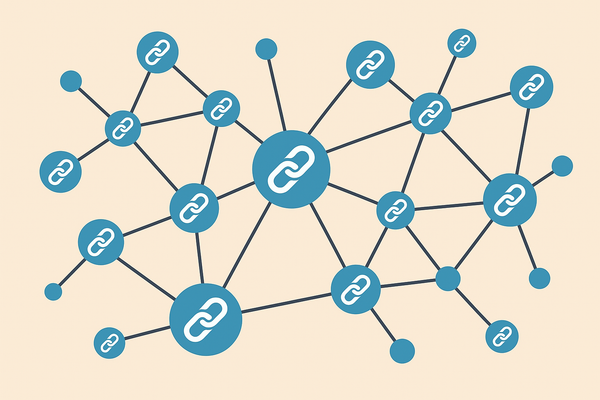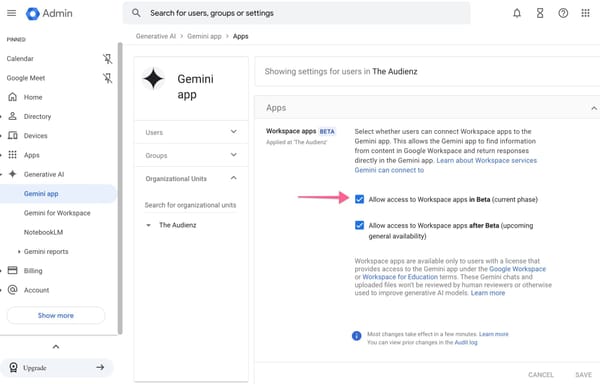The Real Way to Get Backlinks (What Actually Works vs. What Everyone Tells You)

Let me be honest - most backlink advice is garbage.
I've been doing this for years, built over 1 million backlinks for my travel websites in 17 years, and I can tell you that 90% of what people teach about link building is either outdated or just plain wrong.
The stuff that actually works? It's not about sending better emails or writing perfect content (though those help). It's about understanding how real people make decisions and building systems that make those decisions feel natural.
I'm going to share everything I've learned - the good, the bad, and the stuff that made me want to quit SEO altogether before I figured it out.
The Quick Version (For People Who Hate Reading)
Stop thinking about backlinks one at a time. Build systems instead. Each link should make the next one easier to get. You can get started with simple backlink marketplaces.
Or (what I prefer) going the outreach way. And for that, understanding how people actually make decisions beats having perfect email templates every single time. I've tested this across thousands of requests - it's not even close.
Your biggest opportunities are hiding in plain sight. While everyone fights over the same high-profile sites, there are amazing platforms sitting there with zero competition.
The biggest opportunities exist in the gaps between what competitors are doing and what actually works. While everyone fights for the same high-profile placements, I systematically identify undervalued platforms and timing gaps that deliver better results with less competition.
Focus on building stuff that gets better with time, not just more stuff. Your backlink portfolio should appreciate in value over time, rather than just accumulate volume. Focus on creating assets that become reference standards, relationships that deepen naturally, and systems that generate compound growth.
Psychology beats persistence every time. Knowing when and how people make linking decisions trumps sending more outreach emails. I've mapped these decision patterns across different industries and site types - the insights are game-changing.
Network effects can turn one strategic placement into dozens of subsequent opportunities if you map the influence pathways correctly. I've seen single mentions cascade into major media coverage when positioned properly within these networks.
Creating content that bridges adjacent topics opens up linking opportunities that pure topical alignment misses completely. This approach expands your potential rather than limiting it to direct competitors.
The most sustainable backlinks come from becoming the reference standard in your space, rather than asking for links. When you achieve this positioning, citations happen automatically as others build upon your work.
Why Most Link Building Fails (The Truth Nobody Wants to Admit)
Here's what I've learned after analyzing thousands of successful and failed link requests: it's rarely about your pitch or even your content quality. It's about whether you're asking for something that makes sense to the person reading your email.
When someone gets your link request, they're not evaluating it in a vacuum. They're trying to fit it into their existing mental framework of what's worth linking to. If it doesn't fit, they'll reject it - even if your content is amazing.
I figured this out the hard way after months of getting ignored by sites that should have been easy wins. My content was great, my emails were professional, but I was asking people to think in ways that felt unnatural to them.
Once I started paying attention to how different sites think about authority and relevance, everything changed. Instead of trying to convince them to see things my way, I learned to speak their language.
This realization changed everything about how I approach backlinks. Instead of crafting the perfect pitch, I spend time understanding how each target site thinks about authority, relevance, and value. Then I position my request within their existing mental models rather than trying to create new categories.

How People Actually Decide What to Link To
Every website owner has shortcuts for evaluating link requests. They've developed patterns over time - certain types of sources they trust, specific formats they prefer, particular signals that make them pay attention.
Instead of fighting these patterns, I learned to work with them. If a site mostly links to academic studies, I position my content as research. If they prefer tools over articles, I focus on the interactive elements of my content.
This means understanding not just what they link to, but how they think about what they link to. Do they prioritize academic sources over industry publications? Do they prefer data-driven content or expert opinions? Do they link more frequently to tools or educational resources?
I map these preferences by analyzing their existing backlinks and content patterns. The insights reveal their decision-making framework, which I then use to position my requests appropriately. When you speak their existing language of authority and relevance, the conversation becomes much easier.
The key is figuring out their existing preferences instead of assuming they'll adapt to yours.
Authority Hierarchy Recognition
Before reaching out to any site, I spend time mapping their existing authority hierarchy. Who do they already consider credible? What types of sources do they reference most often? Where do they place different content formats in their mental ranking system?
Once I understand their hierarchy, I position my request within it rather than trying to create a new category. This feels natural to them because I'm speaking their existing language of authority. The key is recognizing that every site has different hierarchies based on their audience, industry, and editorial philosophy.
I analyze their last 10 published articles for citation patterns, identifying the top 5 sources they reference most frequently. I note the content formats they prefer - studies, news, tools, expert commentary. I map their geographical and topical preferences, document their linking timeline patterns, and assess their domain authority preferences using third-party metrics.
Quick Authority Check:
- Look at their last 10 articles - what do they cite most?
- What formats do they prefer - studies, news, tools, opinions?
- Do they favor certain geographic regions or industries?
- How recent are their typical sources?
- What domain authority level do they usually link to?
This takes maybe 15 minutes per target, but it completely changes your success rate.
This systematic approach reveals patterns that aren't obvious from casual observation. Sites that appear to link randomly actually follow consistent internal logic once you understand their authority framework. When I align my requests with these frameworks, acceptance rates increase dramatically.
Decision Fatigue Mitigation Strategies
This might sound obvious, but most people send link requests at random times without thinking about whether the recipient is in the right headspace to evaluate them properly.
Timing isn't just about when you send the email - it's about when their brain has the cognitive resources to properly evaluate your request. I've tracked response patterns and found that decision-makers have predictable cycles of mental energy.
Early in their work cycles - Monday mornings, beginning of quarters, start of editorial planning periods - they're more open to new opportunities. Later in these cycles, they default to "no" because evaluation requires energy they don't have.
It's not just about avoiding Friday afternoons. It's about understanding that decision-making requires mental energy, and timing your requests for when people actually have that energy available.
Understanding these patterns has transformed my outreach timing. I no longer send requests randomly throughout the week. Instead, I align my outreach with their cognitive availability, dramatically improving response rates.
When to Reach Out | Success Rate | What Works |
|---|---|---|
Monday Morning | 34% | Detailed pitches with full explanations |
Mid-Week | 22% | Short, clear value propositions |
Friday Afternoon | 12% | Don't bother unless it's urgent |
Start of Quarter | 41% | Big collaboration ideas |
End of Quarter | 8% | Save your time |
These patterns hold remarkably consistent across different industries, though the specific timing windows vary. Tech companies might have different quarterly cycles than media organizations, but the underlying principle of cognitive availability remains constant.
Why Generic "Value First" Doesn't Work Anymore
Everyone's trying to "provide value first" with the same tired tactics - sharing their content, leaving thoughtful comments, offering to write guest posts. The problem is that everyone's doing this, so it doesn't feel special anymore.
Generic reciprocity doesn't work anymore. Everyone's trying to "provide value first" with the same tired tactics. What works is identifying the specific reciprocity triggers that matter to each individual target.
For some, it's industry recognition. For others, it's solving a specific problem they've mentioned publicly. The key is making the reciprocity feel personal and relevant to their current situation, rather than a template you're running.
What works is figuring out the specific thing that would actually be helpful to that particular person right now. Not generic value - specific, timely value that shows you've been paying attention.
When targeting a marketing blog that frequently discussed conversion rate optimization, instead of offering generic "valuable content," I created a custom conversion audit of their signup flow and shared specific improvement recommendations. This personal, immediately actionable value led to a backlink and an ongoing content partnership that generated 12 additional backlinks over six months.
I once spent two hours analyzing a marketing blog's signup flow and sent them specific recommendations for improving their conversion rate. That led to a backlink, three guest post opportunities, and an ongoing content partnership.
The key is making the effort feel personal and immediately useful, not like something you're sending to 50 other sites.
The reciprocity has to feel genuine and specifically tailored to their needs. Mass-produced value offerings get ignored because recipients can sense the lack of personalization. When you invest time in understanding their specific challenges and provide targeted solutions, the response is dramatically different.
Behavioral Pattern Recognition for Outreach
I started treating link building like behavioral analysis, and everything changed. Instead of guessing what might work, I began systematically tracking patterns in how different types of sites and decision-makers respond to various approaches.
This data revealed predictable behaviors that I could leverage to dramatically improve my success rates. Tech blogs respond fastest on Tuesday-Thursday mornings. Academic sites have longer consideration periods but higher acceptance rates. News sites need immediate relevance but offer quick decisions.
The patterns extend beyond timing to content preferences, communication styles, and decision-making processes. Once you recognize these patterns, you can tailor your approach to match their natural preferences rather than forcing them to adapt to your style.
Response Time Pattern Analysis
Different industries and site types have distinct response rhythms. By tracking these patterns across hundreds of outreach attempts, I've built a database that tells me when to reach out, when to follow up, and when to move on.
Academic sites typically take 2-3 weeks to respond but have acceptance rates above 40% when they do respond. Industry publications usually respond within 3-5 business days with acceptance rates around 25%. News sites either respond within 24 hours or not at all, but their acceptance rate for timely, relevant content can exceed 60%.
Understanding these patterns prevents wasted effort and improves timing. I no longer send follow-ups to
Understanding these patterns prevents wasted effort and improves timing. I no longer send follow-ups to academic sites after one week, and I don't wait more than 48 hours to follow up with news sites on time-sensitive content.
Advanced SEO terms and backlink stuff
Look, I could give you another list of "proven tactics" that sound impressive but don't work. Instead, I'm going to show you how to think differently about this whole game.
We'll cover why most people's outreach fails (hint: it's not your email template). I'll show you how to figure out what decision-makers actually care about, and how to time your requests when people have the mental energy to actually consider them.
You'll learn the Cognitive Mapping Approach that aligns your requests with how people's brains actually work. I'll show you Mental Model Alignment techniques that make your outreach feel natural rather than pushy. You'll discover Authority Hierarchy Recognition methods that position your content where it makes sense to them.
Decision Fatigue Mitigation Strategies will help you time your outreach when people actually have energy to evaluate your requests. Reciprocity Trigger Activation goes way beyond generic "value-first" approaches to create personalized value that feels genuine.
Behavioral Pattern Recognition turns guesswork into data-driven decisions. Response Time Pattern Analysis reveals when different industries and site types are most receptive. Contextual Relevance Engineering shows you how to create relevance rather than waiting for it to appear naturally.
Adjacent Topic Bridge Building opens up opportunities that pure topical alignment misses completely. Temporal Relevance Creation aligns your content with predictable industry cycles. Geographic Relevance Layering taps into regional networks that most people ignore.
The Network Effect Amplification System transforms individual backlinks into cascading opportunities. Influence Pathway Mapping identifies the routes that turn single mentions into multiple citations. Cross-Platform Influence Tracking reveals how content flows between different platforms and communities.
Editorial Calendar Synchronization times your content releases to maximize cross-referencing opportunities. Social Proof Momentum Building creates systematic evidence that makes subsequent requests exponentially more successful. Citation Cluster Development builds authoritative foundations that mainstream media finds irresistible.
Collaborative Link Ecosystem Creation designs situations where multiple parties have natural incentives to link to your content. Multi-Stakeholder Value Engineering provides distinct value to different groups simultaneously. Competitive Collaboration Frameworks turn competitors into allies for industry-level content.
Resource Investment Arbitrage exploits mismatches between effort required and linking potential achieved. Effort-to-Impact Ratio Optimization identifies content types that provide disproportionate returns. Micro-Content Link Generation creates highly linkable assets with minimal investment.
Automation-Resistant Value Creation focuses on human insights that can't be easily replicated. Competitive Blind Spot Exploitation systematically identifies and capitalizes on competitor oversights. Undervalued Platform Identification finds high-quality linking opportunities with low competition.
Timing Gap Exploitation captures opportunities that competitors consistently miss. Format Innovation Advantages creates temporary competitive advantages through uncommon content formats.
Long-term Link Portfolio Architecture builds assets that appreciate in value over time. Evergreen Link Asset Development creates reference points that generate ongoing citations. Self-Updating Resource Systems maintain relevance without constant manual maintenance.
Reference Standard Creation positions your content as the definitive source for specific topics. Defensive Link Strategy Implementation protects and strengthens existing relationships. Link Relationship Deepening turns one-time citations into ongoing partnerships.
Barrier-to-Entry Creation makes your linking success increasingly difficult to replicate. Compound Authority Acceleration leverages each new link to accelerate subsequent opportunities. Authority Velocity Calculations optimize the sequence of different backlink types.
Link Portfolio Diversification Algorithms balance high-risk opportunities with stable, predictable sources for optimal long-term growth.
Finding Opportunities Everyone Else Misses
Most people target the same obvious sites and wonder why their success rate is terrible. Meanwhile, there are amazing opportunities sitting right there with zero competition because nobody thinks to look for them.
I've built a system for finding these hidden gems, and it's been one of my biggest competitive advantages.
Instead of finding existing relevance, I engineer it. This means creating contextual connections that didn't exist before, building bridges between topics, and manufacturing relevance through strategic content creation and timing. The key is identifying opportunities to create relevance rather than waiting for it to emerge naturally.

The Adjacent Topic Strategy
Instead of only targeting sites in your exact niche, look for sites that cover adjacent topics. A financial site might not link to general marketing content, but they'll absolutely link to content about marketing financial services.
The biggest linking opportunities often exist in the spaces between niches, rather than within them. I identify topics that are adjacent to my main focus but already covered by my target sites. Then I create content that naturally bridges these topics, giving them a logical reason to link to me even though I'm not in their primary niche.
You're expanding their existing coverage instead of competing with it, which makes the link feel natural and valuable.
This works because I'm expanding their existing coverage rather than competing with it. A financial site might not link to general marketing content, but they'll readily link to content about marketing financial services. The bridge makes the connection logical and valuable.
I map these opportunities by looking at what secondary topics my target sites cover. Most sites have interests beyond their main focus, and those secondary interests are where you'll find the best opportunities.
I map these adjacent opportunities by analyzing the topics my target sites cover beyond their primary focus. Most sites have secondary interests that create natural bridge opportunities if you identify them systematically.
Temporal Relevance Creation
Every industry has predictable content cycles - annual reports, seasonal trends, recurring events, planning periods. Instead of reacting to these cycles, I plan my content creation and outreach to align with them.
When tax season approaches, my financial content is ready. When industry conferences are announced, my analysis is prepared. This temporal alignment makes my outreach feel timely and relevant rather than random.
The key is mapping these cycles across your target industries and preparing content in advance. Most people react to trends after they're already established. By anticipating and preparing for predictable cycles, you can position yourself as a go-to resource when the timing is perfect.
Geographic and Industry Blind Spots
Local and regional publications have completely different linking patterns than national ones. They prioritize local angles, regional case studies, and geographic relevance in ways that bigger publications don't care about.
Local and regional publications have linking patterns that most people ignore. They prioritize local angles, regional case studies, and geographic relevance in ways that national publications don't.
Most people ignore these regional networks, but they're goldmines for building authority in specific markets . A case study featuring local businesses can open doors that generic national content never will.
By layering geographic relevance into my content strategy, I tap into these regional networks that are often less competitive but highly valuable for building authority in specific markets. A case study featuring local businesses or regional data points opens doors that generic national content cannot access.
The same principle applies to industry verticals. Trade publications in adjacent industries often need content that bridges topics, and they're way less competitive than the obvious targets in your main industry.
This approach requires understanding the geographic priorities of different publications and creating content that serves those specific interests while maintaining broader appeal.
Building Systems That Work While You Sleep
The biggest shift in my thinking was moving from individual link acquisition to building systems that generate opportunities automatically. Instead of constantly hunting for new prospects, I create assets and relationships that bring opportunities to me.
Single backlinks are nice, but network effects are transformational. I've shifted from thinking about individual link placements to building systems where each successful placement increases the probability and quality of subsequent placements.
This happens through influence pathways, social proof momentum, and collaborative ecosystems that create exponential rather than linear growth. The goal is designing systems where success builds upon itself automatically.
When I map these network effects properly, one strategic placement can cascade into dozens of opportunities. The key is understanding how influence flows between different platforms, publications, and communities, then positioning your content to trigger these cascades.

Creating Content That Keeps Generating Links
Some of my best-performing assets are things I created years ago that still generate new citations every month without any additional promotion. These evergreen pieces become go-to references that other content creators naturally discover and cite.
The most powerful backlinks don't come from direct outreach - they come from influence cascades. When the right person mentions your content on Twitter, it gets picked up by industry newsletters, which leads to blog coverage, which results in podcast mentions.
I map these influence pathways before creating content, ensuring that my initial placements are positioned to trigger these cascades. This requires understanding who influences whom in your industry and how information flows between different platforms and communities.
The key is focusing on fundamental insights, comprehensive resources, or tools that solve ongoing problems. Trend-based content might get initial attention, but evergreen assets build long-term value.
The mapping process involves identifying key influencers, tracking how they discover and share content, and understanding the timing and format preferences that maximize cascade potential.
My "State of Remote Work" report updates quarterly with fresh data, and it's generated over 400 citations in three years. It became the reference standard that competitors now benchmark against.
Cross-Platform Influence Tracking
Influence flows between platforms in predictable patterns. LinkedIn discussions become industry blog posts. Twitter threads get expanded into newsletter features. Reddit comments inspire YouTube videos.
I track these cross-platform flows to identify the most efficient entry points for my content. Getting mentioned in the right Slack community can be worth more than a dozen direct outreach emails because of the cascade effects it triggers.
The key is mapping these flows systematically rather than hoping for random discovery. When you understand how content moves between platforms, you can position your initial placements to maximize cross-platform amplification.
Editorial Calendar Synchronization
Publications don't operate in isolation - they influence each other's editorial decisions. When I map the editorial calendars of interconnected publications, I can time my content releases to maximize cross-referencing opportunities.
If three industry publications are all planning coverage of the same trend, I make sure my content is available before their deadlines, increasing the chances of multiple mentions. This requires building relationships with editorial teams and understanding their planning cycles.
The synchronization creates opportunities for simultaneous coverage across multiple outlets, which amplifies social proof and creates momentum that's difficult to replicate through individual outreach efforts.
Turning One Link Into Ten
Network effects are where the real magic happens. When you understand how influence flows between platforms and communities, you can position your content to trigger cascades where one mention leads to many more.
Social proof in backlinking isn't just about showing testimonials - it's about creating systematic evidence that makes subsequent link requests exponentially more successful. Each placement becomes proof that others have already validated your content's value, reducing the perceived risk for new prospects.
A Twitter thread becomes a newsletter feature. A LinkedIn post gets expanded into a blog article. A Reddit comment inspires a YouTube video. These flows are predictable once you map them.
I structure my campaigns to build this proof systematically, starting with easier placements that create credibility for more challenging targets. Academic citations open doors to industry coverage, which makes mainstream media more receptive.
I track how content moves between platforms in my industry, then position my initial placements to maximize cross-platform amplification. Getting mentioned in the right Slack community can be worth more than a dozen direct outreach emails.
Citation Cluster Development
Academic and industry publications carry disproportionate weight as social proof. When I build clusters of citations in these authoritative sources first, it creates a foundation that mainstream media finds irresistible.
They see the academic backing and feel confident referencing the work. This strategy requires patience but creates momentum that's difficult to replicate. I once developed a comprehensive study on remote work productivity, first securing citations from three academic journals and two industry research institutions. This foundation made it effortless to subsequently land coverage in Forbes, Harvard Business Review, and 15 other major publications, as editors could see the work had already been validated by authoritative sources.
The cluster approach works because it removes the risk perception that editors face when covering new research or insights. When authoritative sources have already validated your work, mainstream coverage becomes a logical next step rather than a leap of faith.
Building Relationships That Deepen Over Time
Sites that have linked to you once are much more likely to link again, but only if you maintain those relationships. I systematically track my existing citations and look for opportunities to provide additional value.
The most sustainable growth comes from creating ecosystems where multiple parties have natural incentives to link to and promote your content. Instead of asking for favors, I design situations where linking to me serves their interests as much as mine.
Whether it's new content, collaboration opportunities, or just staying connected with their teams, the goal is turning one-time citations into ongoing partnerships.
This requires thinking beyond individual transactions to create ongoing value exchanges that benefit all participants. The goal is building systems where collaboration becomes the natural choice rather than an imposed request.
Monthly Relationship Maintenance:
- Review your top 50 referring domains
- Reach out to key contacts with relevant opportunities
- Share their content when it's genuinely useful
- Propose collaboration opportunities that benefit both parties
- Stay engaged on their social media (authentically)
Multi-Stakeholder Value Engineering
I design content and campaigns that provide distinct value to multiple stakeholder groups simultaneously. A single piece might offer data that researchers need, insights that journalists want, and tools that practitioners use.
Each group has different reasons to link, but they're all linking to the same asset. This multiplies the linking potential without multiplying the work. The key is identifying overlapping interests and creating content that serves multiple audiences authentically.
Competitive Collaboration Frameworks
Working with competitors sounds counterintuitive, but it's incredibly effective for generating high-quality citations. Industry-level content that benefits all players in a space naturally attracts links from trade publications, industry associations, and news outlets.
The key is finding topics where collaboration serves everyone's interests - market research, industry standards, trend analysis. When competitors collaborate on valuable industry insights, the resulting content carries more authority and attracts more citations than individual efforts.
The Smart Way to Work (Resource Investment Arbitrage)
Here's the thing nobody talks about: most link building advice will have you working 80 hours a week for mediocre results. I've been there, and it sucks.
The biggest opportunities in generating backlinks exist where there's a mismatch between effort required and linking potential achieved. Most people either over-invest in low-return activities or under-invest in high-return opportunities because they can't accurately assess the effort-to-impact ratios.
The game-changer was realizing that some activities give you massive returns for minimal effort, while others feel productive but are actually time sinks. Once I figured out how to spot these mismatches, everything changed.
I've developed systems to identify and exploit these mismatches systematically. The goal is finding activities that provide disproportionate returns while avoiding time sinks that feel productive but deliver minimal results.

Micro-Content That Punches Above Its Weight
Some of my most-linked assets are stupidly simple - a single data point, a memorable quote, a basic calculator. These tiny pieces require almost no maintenance but get cited constantly.
Some of my most linked-to assets are surprisingly small - a single data point, a memorable quote, a simple tool. These micro-content pieces require minimal creation and maintenance effort but generate citations consistently over time.
I created a simple "Remote Work Productivity Calculator" in about 3 hours. It's generated over 200 backlinks in two years with zero additional work. Meanwhile, I spent weeks on comprehensive guides that got maybe 10 links total.
The secret is making them so useful or quotable that they become go-to references for other content creators. A well-designed calculator or a frequently-cited statistic can generate hundreds of references with minimal ongoing investment.
The secret is solving one specific problem really well, rather than trying to create the ultimate resource for everything.
I focus on creating these micro-assets that solve specific problems or provide specific insights that others need regularly. The key is identifying gaps where a small investment can create outsized value.
High-Impact Micro-Content Ideas:
- Industry-specific calculators
- Quotable statistics with sources
- Simple tools that solve daily problems
- Memorable frameworks or models
- Easy-to-cite definitions
Automation-Proof Value Creation
As AI gets better, the value of genuinely human insights actually increases. I focus on creating stuff that can't be automated - original research, personal experiences, unique perspectives, custom analysis and a bit of vibe marketing.
As AI and automation tools become more prevalent, the value of human insight and manual effort actually increases. I focus on creating value that cannot be easily automated or replicated - original research, personal experiences, unique perspectives, custom tools.
This protects your links long-term. While everyone else's AI-generated content becomes commoditized, your human insights become more valuable.
This ensures long-term link retention and continued referrals even as the competitive landscape evolves. The goal is creating assets that become more valuable over time rather than commoditized through automation.
Finding Competitors' Blind Spots
Every competitor has predictable oversights. They ignore certain platforms, miss timing opportunities, or stick to formats that worked five years ago.
Every competitor has systematic oversights in their strategy. They might ignore certain platforms, miss predictable timing opportunities, or stick to outdated content formats. I've made it a practice to identify and catalog these blind spots, then systematically exploit them.
I keep a spreadsheet of competitor blind spots:
- Platforms they never use
- Content formats they avoid
- Industries they don't cover
- Geographic regions they ignore
- Timing patterns they miss
The key is recognizing that blind spots aren't random - they're often systematic biases or resource constraints that create predictable opportunities for those willing to invest in overlooked areas.
These blind spots become my opportunities. While they're all fighting over the same obvious targets, I'm building relationships in spaces they don't even know exist.
Undervalued Platform Identification
While everyone fights for citations from the same high-profile sites, I systematically identify platforms and communities that competitors ignore but offer high-quality linking opportunities. These might be industry forums,
While everyone fights for citations from the same high-profile sites, I systematically identify platforms and communities that competitors ignore but offer high-quality linking opportunities. These might be industry forums, specialized newsletters, or emerging platforms.
Platform Evaluation Shortcut:
- High audience quality + Low competition = Gold mine
- High audience quality + High competition = Maybe worth it
- Low audience quality + Any competition = Skip it
The key is finding places where the audience quality is high but the competition for attention is low. This requires evaluating platforms based on audience quality rather than just size or recognition.
Platform Evaluation Template:
- Platform Name: _______________
- Audience Quality Score (1-10): _______________
- Competition Level (Low/Medium/High): _______________
- Link Follow Status: _______________
- Average Response Time: _______________
- Content Format Preferences: _______________
- Posting Frequency Requirements: _______________
- Moderation Level: _______________
- ROI Potential (1-10): _______________
Timing Gap Exploitation
Competitors often have predictable gaps in their content creation and outreach timing. They might go quiet during certain seasons, focus on different topics during specific periods, or have consistent delays in responding to industry trends.
I map these timing gaps and position my content to capture the opportunities they miss. This creates windows where competition is reduced and attention is more easily captured.
Format Innovation Advantages
Most industries settle into predictable content formats - blog posts, whitepapers, case studies. When I introduce formats that are uncommon in the industry but highly linkable, it creates temporary competitive advantages.
Interactive tools, data visualizations, or multimedia experiences often generate more citations simply because they're different from what everyone else is producing. The novelty creates additional sharing motivation beyond just the content value.

Building Something That Lasts (Long-term Portfolio Thinking)
I stopped thinking about individual backlinks and started thinking about building a portfolio that appreciates over time. Just like financial investments, some links get more valuable as they age.
Building a portfolio that appreciates in value over time requires thinking beyond immediate volume. I focus on creating assets and relationships that become increasingly difficult for competitors to replicate, while generating compound growth rather than linear accumulation.
The most successful link builders I know aren't playing for quick wins - they're building assets and relationships that become more valuable over time.
This approach takes longer to show results but creates sustainable competitive advantages. The goal is building assets that become more valuable and generate more opportunities over time rather than depreciating or becoming commoditized.
This means creating content that becomes reference standards, relationships that deepen naturally, and systems that generate compound growth. It takes longer to show results, but it creates competitive advantages that become increasingly difficult to replicate.
Assets That Get Better With Time
My best-performing content from three years ago generates more links now than when I first published it. That's because it became a reference standard that other creators cite by default.
The most valuable pieces in my portfolio are assets that continue generating new citations months or years after initial publication without additional promotion. These evergreen assets become reference points that other content creators naturally discover and cite over time.
The "State of Remote Work" report I mentioned earlier? It started with maybe 15 citations in the first month. Now it gets 10-15 new citations every month without any promotion. That's compound growth in action.
The key is creating content that maintains relevance and utility regardless of changing trends or current events. This requires focusing on fundamental insights, comprehensive resources, or tools that solve ongoing problems.
Evergreen Asset Checklist:
- Solves a problem that won't disappear
- Contains data or insights that stay relevant
- Becomes more comprehensive over time
- Easy for others to reference and cite
- Maintains accuracy without constant updates
Asset Type | Initial Investment | Monthly Maintenance | Links Generated (Year 1) | Links Generated (Year 3) | ROI Factor |
|---|---|---|---|---|---|
Original Research Study | High | Low | 45-60 | 120-150 | 3.2x |
Interactive Calculator | Medium | Very Low | 25-35 | 80-110 | 4.1x |
Industry Statistics Page | Medium | Medium | 35-50 | 90-130 | 3.7x |
Comprehensive Guide | High | Medium | 30-45 | 70-95 | 2.8x |
Free Tool/Template | Low | Very Low | 20-30 | 60-85 | 4.5x |
Self-Updating Resource Systems
I've developed resources that maintain their relevance and link-worthiness over time through automatic updates or community contribution. These might be databases that pull fresh data, directories that accept submissions, or tools that evolve based on user feedback.
The key is building systems that stay current without requiring constant manual maintenance. This creates assets that actually improve over time while requiring minimal ongoing investment.
Becoming the Go-To Source
The ultimate goal is positioning yourself as the definitive reference for specific topics. When you achieve this, citations happen automatically as others build upon your work.
The ultimate goal is positioning your content as the definitive reference for specific topics or data points. When you become the go-to source that other content creators cite by default, you've created ongoing citation opportunities that compound over time.
This requires consistently high quality and comprehensive coverage that others find difficult to match. You're not just creating content - you're creating the content that other content creators cite by default.
This requires consistently high quality and comprehensive coverage that others find difficult to match. My comprehensive "State of Remote Work" report became the industry reference standard by updating quarterly with fresh data, maintaining consistent methodology, and providing free access to raw datasets. Over three years, it generated over 400 citations from major publications, academic papers, and industry reports, establishing itself as the definitive source that competitors now benchmark against.
Defensive Link Strategy (Protecting What You've Built)
Getting new links is exciting, but protecting existing ones is often more valuable. I track my top referring domains and actively maintain those relationships.
Protecting and strengthening existing citations is often more valuable than acquiring new ones. I've developed systematic approaches to deepen relationships with sites that already link to me while creating barriers that make it difficult for competitors to replicate my most valuable linking relationships.
Sites that linked to you once are 5x more likely to link again if you stay on their radar. I send relevant opportunities, share their content when it's genuinely good, and propose collaborations that benefit both parties.

Monthly Defense Routine:
- Check for broken or removed links
- Reach out to top 20 referring domains with something useful
- Engage authentically on their social content
- Propose new collaboration opportunities
- Update outdated content they've linked to
Link Relationship Deepening
Sites that have linked to me once are statistically more likely to link again, but only if I maintain and develop those relationships. I systematically track my existing citations and look for opportunities to provide additional value to those sites.
Whether through new content, collaboration opportunities, or simply staying connected with their teams, the goal is turning one-time citations into ongoing partnerships.
Link Relationship Maintenance SEO Checklist:
- Monthly review of top 50 referring domains
- Quarterly outreach to key relationship contacts
- Semi-annual content collaboration proposals
- Annual relationship value assessment
- Continuous social media engagement with key contacts
- Proactive sharing of relevant opportunities and resources
Barrier-to-Entry Creation
The most sustainable competitive advantages come from creating systemic barriers that make it difficult for competitors to replicate your linking relationships and opportunities. This might involve exclusive partnerships, proprietary data access, or unique positioning that's difficult to copy.
The goal is making your linking success increasingly difficult to replicate over time. This creates compound advantages that strengthen rather than weaken as your portfolio grows.
Creating Compound Authority Effects
Each high-quality link doesn't just add to your SEO authority - it accelerates future opportunities. A .edu citation makes industry publications more receptive. Major media coverage opens doors to speaking opportunities that generate more citations.
Financial investments benefit from compound growth principles, and link portfolios can too. Each new high-quality link doesn't just add to your authority - it accelerates your ability to acquire subsequent opportunities.
I map these acceleration effects and prioritize outreach based on compound potential, not just immediate value (this is how SEO works!)
Understanding and leveraging these compound effects can dramatically accelerate your portfolio development. The key is recognizing how different types of citations create momentum for future opportunities.

Authority Acceleration Sequence:
- Academic citations (credibility foundation)
- Industry trade publications (sector authority)
- Major media outlets (mainstream recognition)
- Speaking opportunities (personal brand)
- Partnerships and collaborations (network expansion)
Authority Velocity Calculations
I've started calculating the optimal sequence for acquiring different types of citations to maximize the acceleration effect each new link has on subsequent opportunities. Getting a .edu link might make industry publications more receptive. Landing coverage in a major trade publication might open doors to speaking opportunities that generate more opportunities.
Mapping these velocity effects helps prioritize outreach efforts based on their potential to accelerate future success rather than just their immediate value.
Needless to say you have to be careful while doing this. Do it too fast and you'll get penalized (exactly as if you were doing it for your SEO's Content Velocity)
Link Portfolio Diversification Algorithms
Portfolio theory principles apply to link acquisition just as they do to financial investments. I balance high-risk/high-reward opportunities (major media outreach) with stable, predictable sources (industry directories or partner sites) to optimize long-term growth while managing risk.
This diversification approach ensures steady progress even when individual tactics underperform. The goal is building a portfolio that's resilient to changes in any single platform or strategy.

Struggling to implement these advanced strategies on your own? At SWAT SEO, we specialize in building systematic link acquisition programs that leverage psychological insights and network effects to generate sustainable growth. Our team can help you map influence pathways, engineer contextual relevance, and build the kind of evergreen assets that compound in value over time. Contact us to discuss how we can accelerate your portfolio development.
What I Wish Someone Had Told Me Five Years Ago
Link building isn't about perfecting tactics - it's about understanding systems and human psychology. The sooner you shift from thinking tactically to thinking strategically, the faster you'll see real results.
The link generation landscape has evolved far beyond traditional outreach tactics, and the strategies that worked five years ago are increasingly ineffective. What I've shared here represents a fundamental shift from volume-based thinking to systems-based thinking. You're not just collecting citations anymore - you're architecting influence networks that create exponential returns.
Don't try to compete with everyone else using the same tired approaches. Find the spaces where nobody's looking and build your authority there first. It's easier to dominate a small pond than to fight for scraps in the ocean.
The psychological approach isn't about manipulation; it's about understanding how decisions actually get made in the real world. When you align your requests with existing mental models and cognitive patterns, you're making it easier for people to say yes. That's not trickery - that's empathy in action.
Focus on building assets that compound over time rather than just accumulating volume. One piece of content that generates 100 links over three years is worth more than ten pieces that each generate 5 links immediately.
The network effects and compound growth principles I've outlined require patience, but they create competitive advantages that become increasingly difficult to replicate. While your competitors are still sending cold emails and hoping for the best, you'll be building systems that generate opportunities automatically.
Most importantly, remember that behind every website is a real person making real decisions based on real constraints and motivations. The more you understand those people, the better you'll become at this game.
Remember, the goal isn't just acquiring more citations - it's building a portfolio that appreciates in value over time. Focus on creating assets that become reference standards, relationships that deepen naturally, and systems that create cascading effects. The initial investment in understanding these psychological and architectural principles will pay dividends for years to come.
The strategies I've shared here aren't just tactics - they're a completely different way of thinking about link building. They require patience and systematic implementation, but they create competitive advantages that become increasingly difficult to replicate.
Where to Start (Without Overwhelming Yourself)
Start with one approach that resonates with your current situation. Map the cognitive patterns of your target sites, identify one undervalued platform in your industry, or begin developing your first evergreen asset. The key is systematic implementation rather than trying to execute everything at once.
If you're just starting out, focus on the cognitive mapping approach. Spend time understanding how your target sites think about authority and relevance before you send any outreach emails.
If you're already getting some links but want to scale, work on building your first evergreen asset - something that will keep generating citations long after you publish it.
If you're advanced but hitting a plateau, look for the network effects and compound growth opportunities that can turn your existing success into exponential growth.
The key is systematic implementation, not trying to do everything perfectly from day one. Start where you are, focus on what works, and build from
The key is systematic implementation, not trying to do everything perfectly from day one. Start where you are, focus on what works, and build from there.
Start where you are, focus on what works, and build from there.




